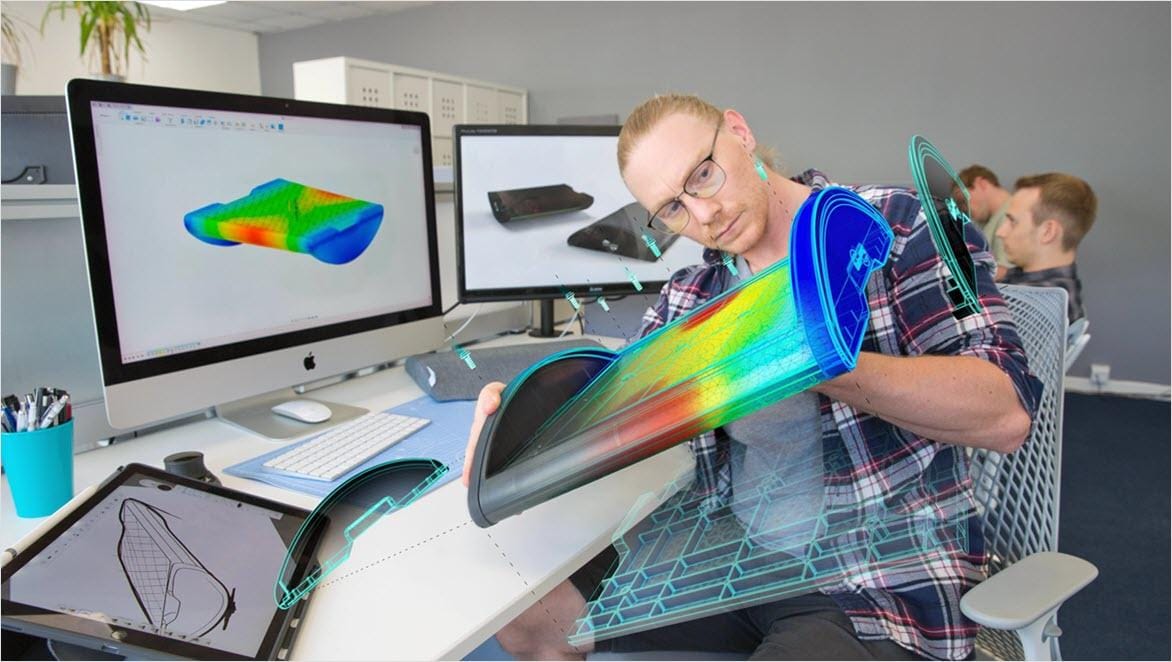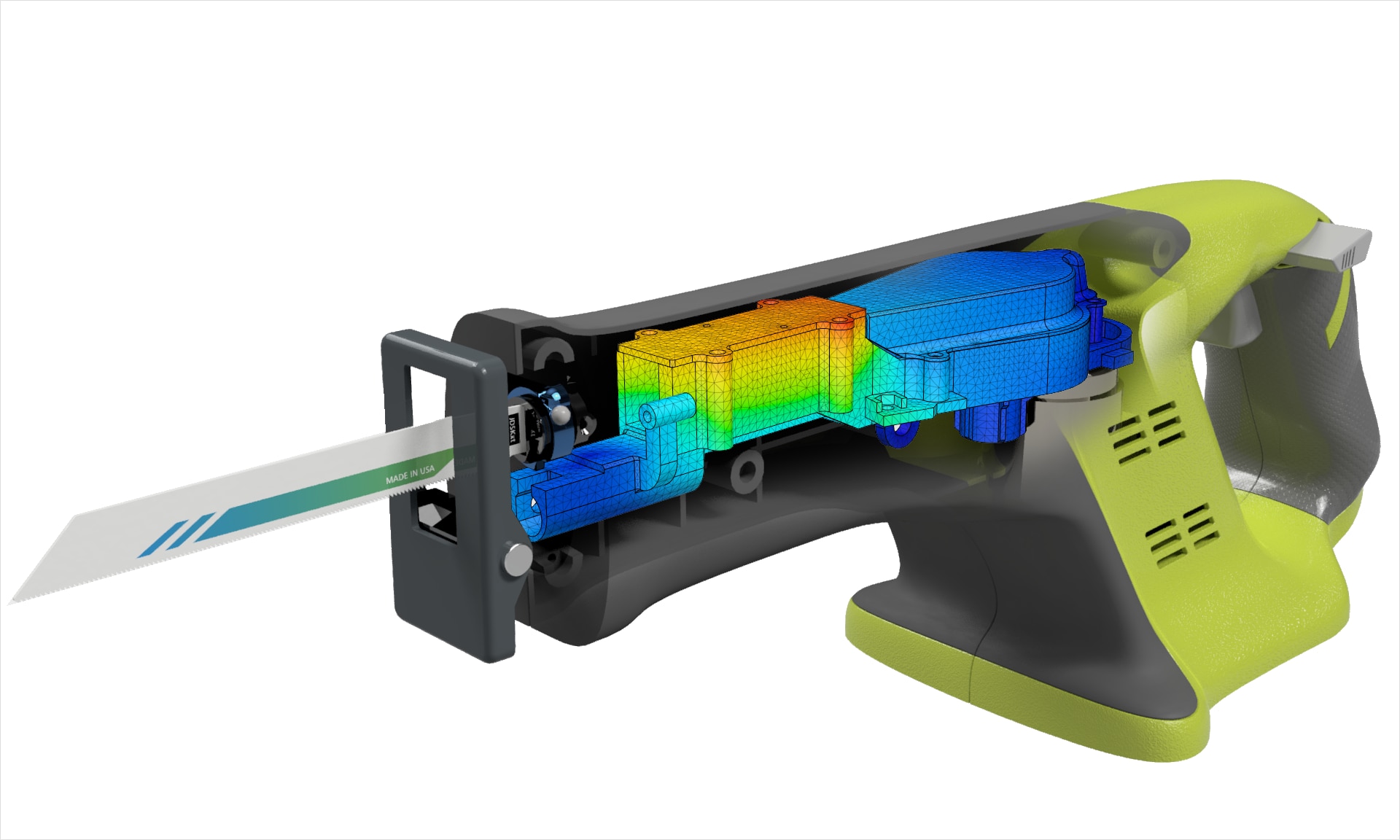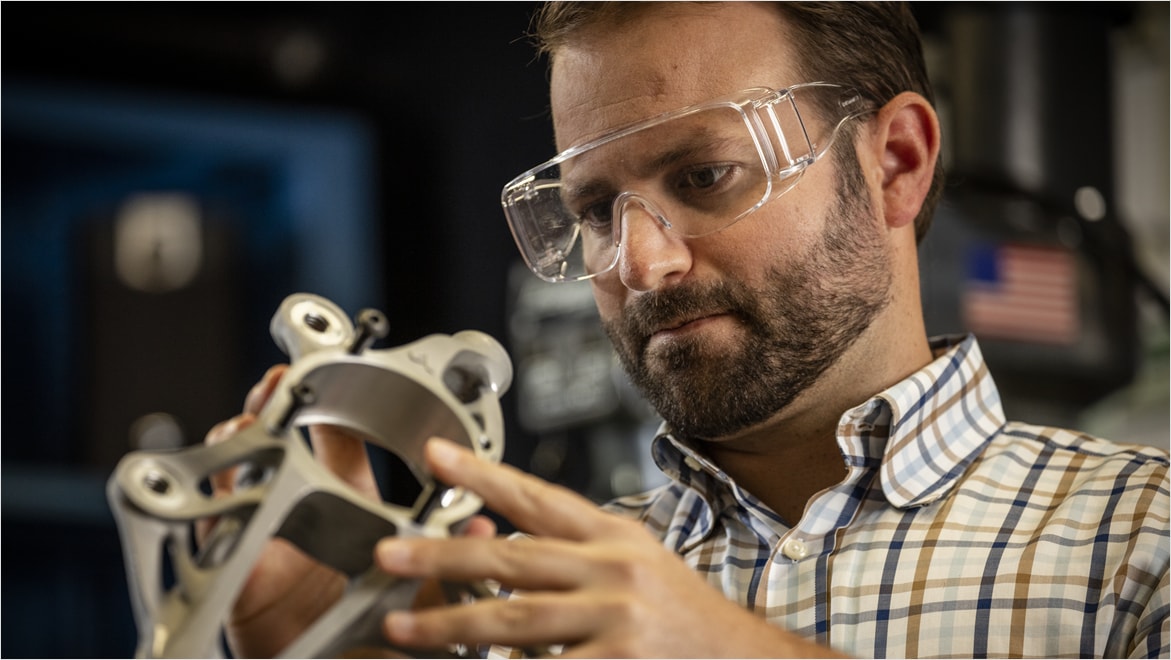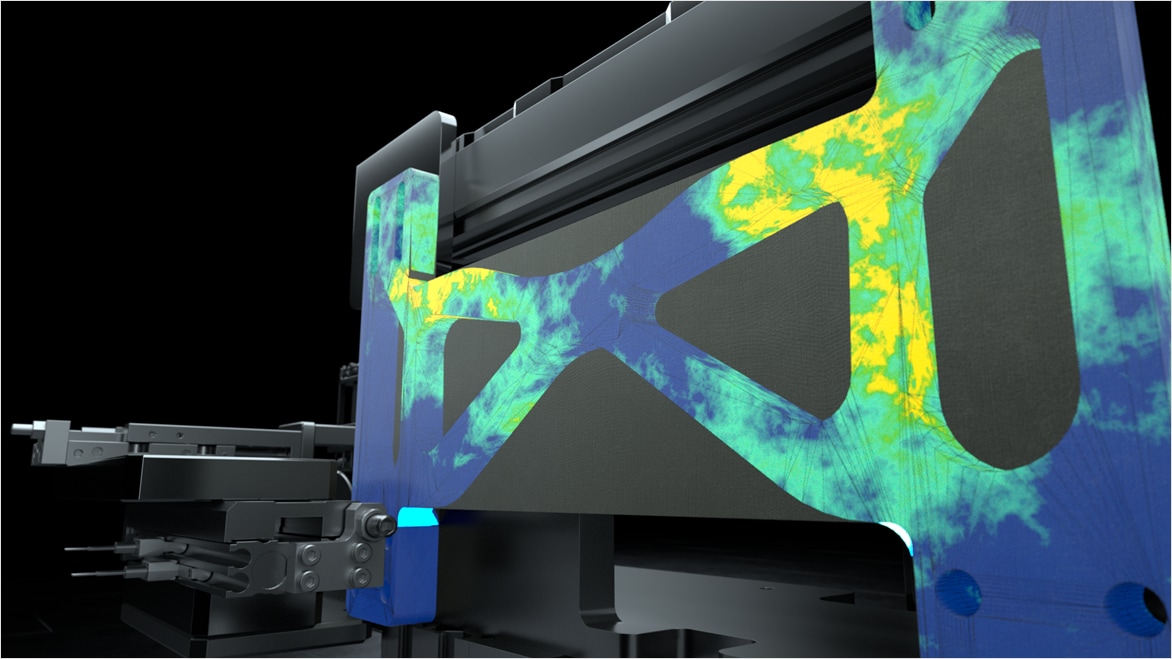& Construction

Integrated BIM tools, including Revit, AutoCAD, and Civil 3D
& Manufacturing

Professional CAD/CAM tools built on Inventor and AutoCAD
Topology optimization is a mathematical method used in engineering to design structures that maximize performance while minimizing material usage. It involves finding the best shape and layout for a structure to achieve desired goals, such as strength, stiffness, or weight, by removing unnecessary material. Topological optimization techniques help users work around the limitations of pure shape optimization.
Topology optimization is a powerful tool that helps designers and engineers create lightweight and strong structures by figuring out the best way to distribute material within a design space. It leads to efficient and creative designs, often with unique shapes that traditional methods can't achieve. This not only saves material and reduces costs but also supports sustainability.
By integrating seamlessly with Autodesk's CAD tools, topology optimization allows for quick and easy testing and refining of designs before making physical prototypes. This speeds up the development process and opens up more design possibilities. The result is better-performing products that are both efficient and high-quality, ultimately boosting customer satisfaction.
Powerful product design and engineering tools for 3D mechanical design, simulation, visualization, and documentation.
Industrial design software to sketch, concept model, surface, and visualize. Available as Alias Concept, Surface, and AutoStudio.
Computational fluid dynamics simulation and solid body motion analysis software. Available as CFD Premium and CFD Ultimate
Topology optimization emerged in the 1980s, with researchers like Bendsoe and Kikuchi pioneering the homogenization method, laying the groundwork for modern techniques.
Developed in the 1990s, the SIMP method became a widely used approach in topology optimization by iteratively updating material distribution to achieve optimal structures.
Advancements in computational power and algorithms made topology optimization more efficient and capable of solving complex problems, with level-set methods and evolutionary algorithms offering new approaches.
The integration of topology optimization with computer-aided design (CAD) and computer-aided engineering (CAE) tools allowed for more seamless design processes.
Additive manufacturing (3D printing) has revolutionized topology optimization, enabling the creation of highly optimized, complex structures that traditional methods can't produce. Researchers and engineers now use topology optimization to design lightweight, efficient structures for aerospace, automotive, medical, and other industries.
Use topology optimization algorithms to develop a variety of complex engineering and design solutions.
Improve strength-to-weight ratios by removing excess material that is not necessary for the design’s performance requirements.
Shape optimization technology helps inform certain geometry decisions to specific constraints such as manufacturing methods.
Calculate the physical response of a given shape, depending on the forces the shape is subjected to.
Incorporate multiple types of physical phenomena such as fluid-structure interaction, thermal transfer, and stress loads to calculate optimal design.
Implementing topology optimization into the design process offers many benefits, including:
Topology optimization helps reduce material usage by identifying the optimal distribution, leading to lightweight designs without compromising on strength or performance.
By minimizing material usage and enhancing design efficiency, topology optimization lowers manufacturing costs and reduces waste.
Optimized designs often result in structures that are stronger and more durable, improving overall performance and reliability.
The technique enables the creation of complex, organic shapes that are difficult to achieve with traditional methods, fostering innovation in design.
Less material usage and waste contribute to more sustainable manufacturing practices, supporting environmental goals.
Integrating topology optimization into the design process allows for rapid testing and refinement of designs in a virtual environment, speeding up the development process and reducing time-to-market.
The convergence of topology optimization with generative design marks a significant advancement in engineering and design. By integrating topology optimization with Autodesk generative design, designers and engineers can achieve many benefits.
Autodesk generative design technology uses advanced algorithms to automatically generate a wide range of design alternatives based on user-defined goals, enabling rapid exploration and iteration. By integrating topology optimization, it makes sure each design is optimized for material usage and structural performance, resulting in efficient, high-strength designs. Visualization tools allow for easy comparison of alternatives, identifying the best solution. The tool considers various manufacturing methods, making sure that designs are feasible to produce. By automating exploration and optimization, generative design streamlines workflows, reducing the time and effort needed to find the best design solution.
The future of topology optimization looks promising, driven by advancements in additive manufacturing, and computational power. We can expect more intricate and optimized designs that were previously unattainable. Faster algorithms will enable real-time design adjustments, while integration with AI will enhance predictive capabilities and automate design processes. There will also be a greater focus on resource-efficient and environmentally-friendly designs. Overall, topology optimization will continue to push the boundaries of innovation, efficiency, and sustainability in various fields.
Learn the basics, workflow, and limitations of topology optimization in Autodesk Nastran In-CAD. This includes modifying existing designs to remove unnecessary material and generating new designs from an empty design space for improved efficiency.
Unlike topology optimization, Autodesk Generative Design provides designers and engineers with a full design exploration solution.
In this hands-on tutorial session, learn how to design critical parts using shape optimization on the cloud within Autodesk Fusion.
Topology optimization helps create efficient and high-performance designs by minimizing material usage while maintaining strength and functionality. This process enhances material efficiency, leading to cost savings and reduced waste, which is beneficial for sustainable practices. It also encourages innovation by enabling the creation of novel and effective design solutions that might not be achievable through traditional methods.
Topology optimization focuses on refining a given design by removing unnecessary material from an initial design space to enhance efficiency and performance. Generative design, on the other hand, explores numerous design possibilities from scratch using algorithms to generate and evaluate multiple alternatives. As a result, generative design often results in a broader range of innovative solutions compared to the more focused optimization achieved through topology optimization. While both techniques aim to create efficient and high-performance designs, generative design provides a more comprehensive approach by exploring and evaluating diverse design options, whereas topology optimization concentrates on improving an existing design's material efficiency and functionality.
Shape optimization and topology optimization are both techniques used to enhance the performance and efficiency of designs, but they differ in their approaches. Shape optimization focuses on modifying the boundaries or surfaces of an existing design to improve its performance, often by refining the geometry to better meet specific objectives such as reducing stress concentrations or improving aerodynamics. Topology optimization, on the other hand, involves altering the internal material distribution within a given design space, starting from a more general form and removing unnecessary material to achieve the best structural layout.
Topology optimization is used by defining a design space and applying specific constraints and objectives, such as minimizing weight or maximizing strength. Algorithms then iteratively remove unnecessary material from the design space, creating an optimized structure that meets the desired performance criteria while using the least amount of material.
While topology optimization offers significant benefits, it also has some disadvantages. One major drawback of topology optimization is the complexity of the resulting designs. These can be difficult to manufacture using traditional methods due to intricate geometries and fine details. The optimization process also requires significant computational resources and time, especially for large and complex structures. This can be a limiting factor for projects with tight deadlines or limited budgets. Further, the optimized designs may sometimes be overly tailored to specific loading conditions, potentially lacking robustness under varying or unforeseen conditions. Interpreting and validating the results of topology optimization can also be challenging, requiring specialized knowledge and expertise to make sure that the optimized design meets all practical and safety requirements.







